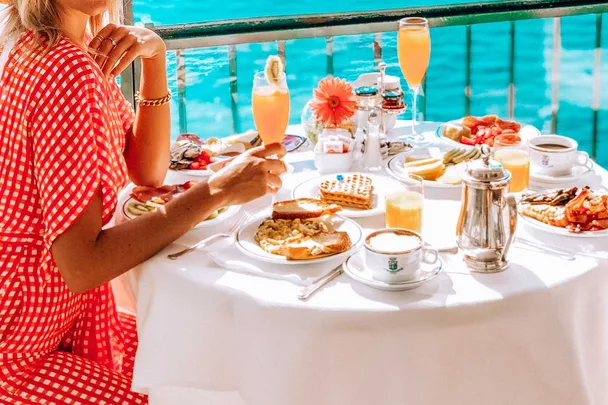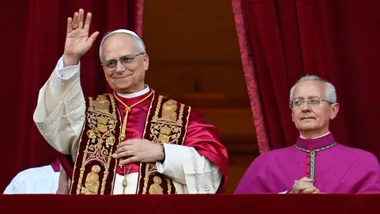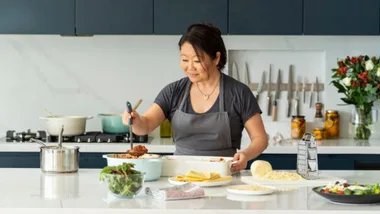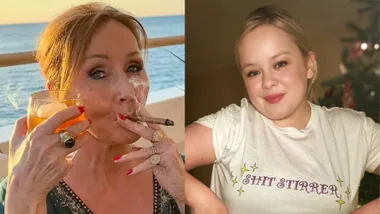Arielle Charnas had a cold. Nothing too serious, really, but the symptoms were there: fever, sore throat and a headache. So the American lifestyle influencer known as “Something Navy” announced to her 1.3 million followers that she was going to get tested for coronavirus.
It was March 16, and the tally of COVID-19 infections and deaths outside China had just surpassed those inside China. Charnas shared the swab on her Instagram stories. At the time, the US was administering only about 14,000 tests a day. But Charnas got one, and she tagged the doctor in her posts. She then shared a Louis Vuitton ‘unboxing’ before revealing she had tested positive for COVID-19. Together with her husband and two young daughters, she fled New York for the Hamptons, bringing their nanny along too. It was the vintage rattan straw that broke the camel’s back. Her behaviour went viral: the New York Post called her a “Covidiot” for flaunting her privilege in obtaining a scarce test and for breaking quarantine to leave the city. On April 2, Charnas shared an impassioned apology and retreated from public view.
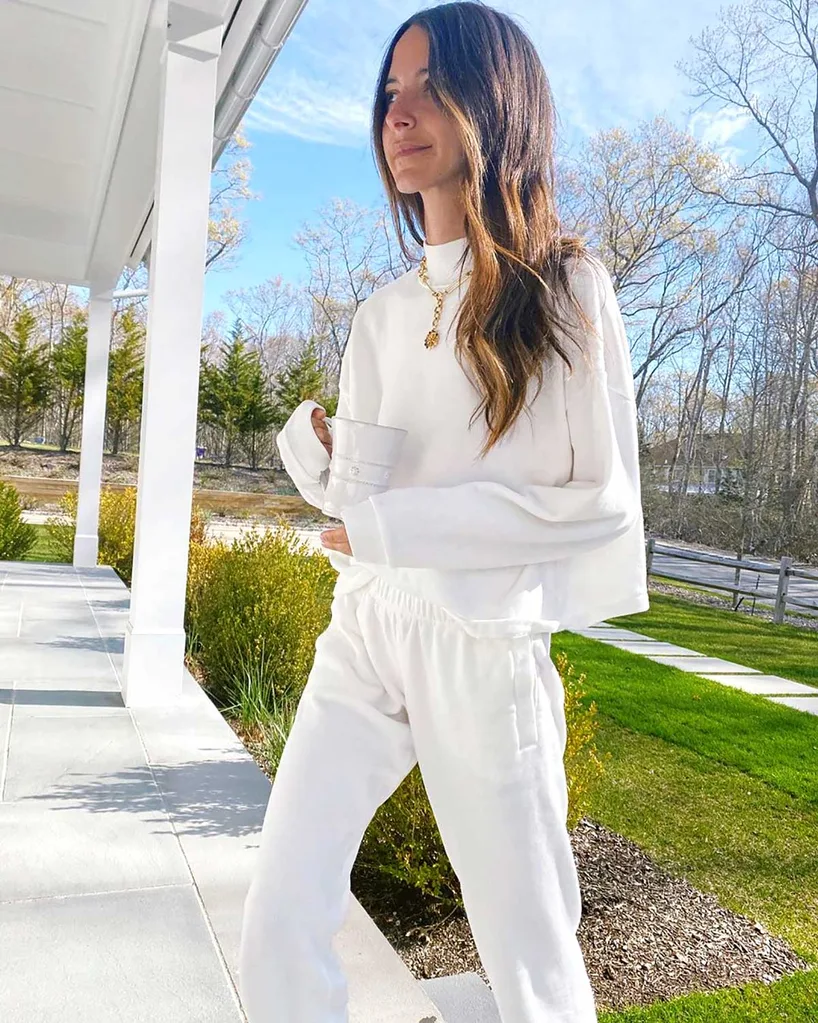
Arielle Charnas at her Hamptons getaway
Within the influencer community, scandals like this are not isolated. According to one study, influencers have been responsible for producing or spreading one fifth of all coronavirus misinformation. Naomi Davis (@taza, 460,000 followers) was criticised for leaving New York – the epicentre of the US epidemic – to drive across the country in an RV (“Hopefully a little change of apartment scenery will be just what we need,” the mother-of-five wrote). In Australia, Skye Wheatley (@skye.wheatley, 618,000 followers) promoted an Instagram competition with an image of her and her son, Forest, perched languidly in the empty toilet paper aisle at Coles. The backlash prompted critics to ask the same question: is this the end of the influencer? Given their apparent lack of self-awareness in the face of an international crisis, could this be the nail in the coffin for #sponcon, flat lays and outlandish outfit selfies forever?
It all comes down to this: the influencer economy, as parsed most lucratively through Instagram, is built on shifting product – whether it’s a Tom Ford handbag or a packet of Flat Tummy Tea. And it does a lot of that: in 2019, influencer marketing was an $11.7 billion business, with 79 per cent of those campaigns living on Instagram. More than 200 million accounts boast in excess of 50,000 followers, the number at which you can make a living from posting. According to one expert, influencers with up to a million followers can charge up to almost $15,000 a post; while those exceeding a million fans can rake in more than $145,000 every time they turn on their selfie camera.
In order to make that kind of money, influencers need to be constantly posting, feeding the algorithm like a Tamagotchi. Right now, though, as we grapple with the fact a deadly virus has killed more than 450,000 people worldwide, nobody really cares. Nobody wants to see an influencer photo shoot for a fast-fashion brand beamed against the backdrop of a Coachella-esque sunset. (Coachella, sort of like the G20 for Instagrammers, was cancelled this year because of coronavirus.) A pandemic simply isn’t something we can live, laugh and love our way through.

Kris Schatzel turns an anti-racism rally into a photo shoot
Nor is the Black Lives Matter movement. The death of George Floyd in late May sparked outrage across the world, yet for some bloggers, it was just another opportunity for content. One shocking video captured Russian influencer Kris Schatzel (@rusabnb, 239,000 followers) turning an LA protest into a photo shoot, running out onto the street in a black gown, placard in hand, working her angles while emotionally charged protesters darted around her. Meanwhile, Olivia Jade (@oliviajade, 1.3 million followers), daughter of Full House’s Lori Loughlin, was slammed for urging her followers to use their white privilege to fight racism – given white privilege has thus far protected her parents (who used fraud to get her into college) from jail. Other influencers have stood up and voiced their support for Black Lives Matter, but it’s hardly conducive to building a fashion or lifestyle brand.
“What Instagram has taught us is that in order to gain a following, people need to post very optimistic lifestyle content,” explains Sarah Frier, author of No Filter: The inside story of how Instagram transformed business, celebrity and our culture (Random House Business, $35). “But right now, people are struggling. And there isn’t any product that can fix that.”
Hermione Underwood is the millennial version of a renaissance woman. The London-based Australian is a jewellery designer, brand consultant and lifestyle influencer. She has more than 54,000 followers and describes her posting style as “light-hearted, authentic and real”, a tone that only amplified during self-isolation.
“The old days of pushing product aren’t going to be well received in the current environment,” she explains. “Influencers and brands need to pivot and quickly respond to [the] times.” For Underwood, that’s meant being “conscious of what I’m posting and being more cautious than ever”, she says. “It’s a sensitive time.”
For most influencers, the pandemic has caused a haemorrhaging of income as brands slash their budgets and cancel overseas trips. One Melbourne fashion influencer, speaking anonymously, says she has experienced an 80 per cent slowing down of work, with jobs under negotiation immediately pulled. She hasn’t received any negative feedback on posts, but has noticed an increase in people unfollowing her account. “People are so aware of how these platforms work now,” she says. “Not everyone wants this space to be clouded by advertising and, in some cases unfortunately, mistrust.”
One of the industries hardest hit by coronavirus is tourism – globally, revenue is set to fall by 34.7 per cent in 2020. Pre-pandemic, the world’s biggest travel bloggers were making more than $436,000 a month; now, they’re watching their business disappear before their eyes. Alesha Bradford and Jarryd Salem, the Australian influencers behind @nomadasaurus (86,800 followers), say that work has “come to a complete halt” and website traffic is at an all-time low. “One client would cancel and we’d think, ‘That’s OK, at least we have X, Y and Z coming up,’” Bradford says. “Then another email would come in a few hours later, and before we knew it everything was gone.”
Aubrey Daquinag, an Australian travel influencer (@theloveassembly, 36,300 followers) was living in London when the pandemic hit and made the decision to return to Sydney. From there, Daquinag pivoted to vlogs, joined TikTok and crafted an e-course on content creation. “As an influencer, you can either create a stronger relationship with your audience by showing up in your unique way and adapting to world issues to get through it together,” Daquinag explains, “or choose to ignore and completely disconnect from a situation that
can actually create a closer bond.”
So what makes one influencer’s response resonate and another’s prompt angry comments and unfollows? The same thing that makes fans of Tom Hanks swoon when he sends a letter to a boy bullied at school for being called Corona, while laughing at the collective indignity of celebrities including Gal Gadot and Jamie Dornan warbling “Imagine” from within their quarantine mansions. It all comes down to self-awareness and trust. Influencer marketing specialist Victoria Harrison of The Exposure Co. says that only those with a true connection to their audience will survivethe crisis. “It has been easier for inauthenticity to slip through the cracks when masked with pretty pictures, ‘location candy’ and filters,” she explains. “Now, there’s less patience for accounts that don’t provide valuable content.”
This isn’t necessarily a new issue for influencers, though recent events have thrown authenticity into sharp relief. Since 2019, Instagram has taken steps to decentre its aesthetics-above-all-else reputation. The platform stopped displaying like counts and advised creators – privately, according to Frier – to prioritise “raw” and “vulnerable” content, because it leads to higher engagement. This is the kind of material you can expect from influencers going forward, predicts Frier: more confessional, more humour, more live videos, more sense of community. Less over-the-top aesthetics, less perfection. Authenticity over artifice, basically.
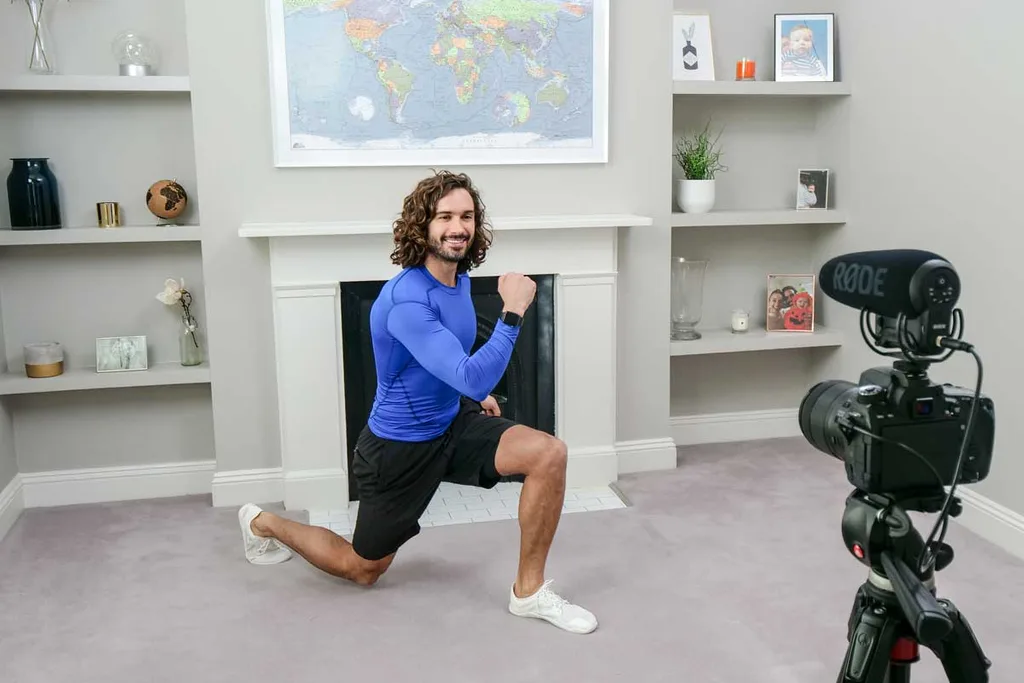
Fitness coach Joe Wicks, aka “the UK’s PE teacher”
The irony is that engagement on social media platforms is actually up (a massive 40 per cent on Facebook for 18–34-year-olds). It makes sense, given we’ve all spent more time at home. For the savvy influencer, 2020 could even bring about a boom. Think of Joe Wicks, the fitness guru who has since been dubbed “the UK’s PE teacher” after his at-home exercise videos for children in lockdown went viral. Or even Underwood, whose hilarious posts about the haircut her family gave their Pomeranian proved so popular she ended up doing a live segment on Channel Seven’s Sunrise. After all, influencers are the masters of domestic content production; they were the ones who first turned their houses into advertorial-worthy studios. There’s a reason why Frier describes them as “tiny media companies”.
Can it last? Akin to most things in the world right now, we simply don’t know. Can an entire industry pivot to earnestness and vulnerability, instead of aspiration and aesthetics? And can they make money off that tone, which is the only thing that really matters? Maybe a new model will emerge, one that prioritises this texture of authenticity. Conscious consumption is already a trend, with content creators and brands alike switching to a more considered voice. “If you describe an influencer as somebody who takes money to hawk a product, maybe that’s not all it can be anymore,” Frier muses. As Harrison says, “it certainly won’t be the ‘end of the influencer’, but it will be the end of certain influencer accounts.”
And Charnas? After almost a month away from Instagram, she returned to the platform on April 24, her follower count undinted. “We missed you guys so much!!” Charnas captioned the selfie announcing her return. “Can’t wait to reconnect with you all.”
This article originally appeared in the August 2020 issue of marie claire.
